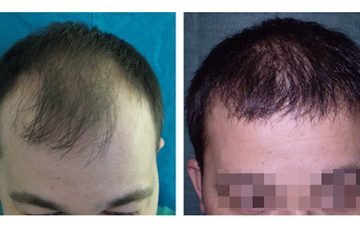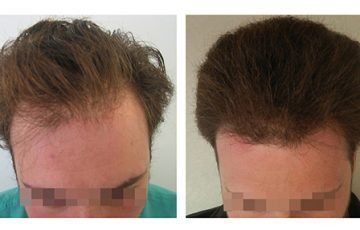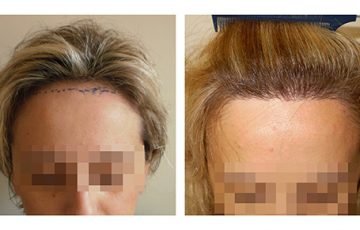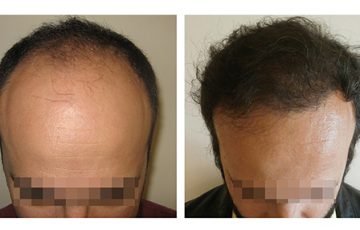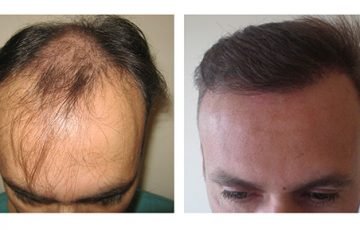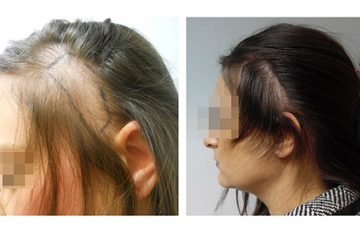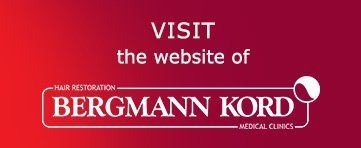

F A Q s
The Hows and the Whys explaining your inquiriesDear Visitors,
In this page, we have tried to include the most Frequently Asked Questions, with the most thorough responses.
Generally, Hair Transplant – especially the most modern and advanced FUE method – is of great interest, both as a subject of research and a key issue, for the improvement of both our external appearance and psychology.
The external image is closely related to confidence and self-esteem, also having an impressive effect on physical wellness.
There are so many questions. However, we do not aspire to respond to all questions.
Pursuit – Commitment
Our goal is to provide answers to the most Frequently Asked Questions. Each one is important.
Therefore, we would really appreciate your help, regarding our effort to upgrade our services for your benefit.
We will feel pleased if you address us any of your unanswered questions, through our contact form here or here.
We are committed to immediately replying and we would like to thank you in advance, for your contribution to the enrichment of our information, for other interested persons, too.
Acquaintance – Open Invitation
Last but not least, we would like to mention the fact that personal contact cannot be replaced.
For this reason, we suggest you give us the pleasure to meet in person and, through our Medical Staff, you will obtain the most detailed briefing.
Meanwhile, you will receive comprehensive Medical recommendations on any issue related to Hair Loss.
Of course, the whole process will be totally free of charge for you.
You can arrange your appointment here.
What is the Donor Area?
The area of the scalp that includes hair follicles, which have a particular genetic predisposition and resist to androgens’ action, is defined as the stable hair growth area.
This area does not have the propensity to suffer from hair loss and in most cases presents satisfactory hair density.
It is usually defined as the back and side parts of the scalp.
It is named Donor Area because, during operation, follicles are transferred from it, to the area facing hair loss.
We should mention that, at Bergmann Kord, hair transplants are performed mostly with hair follicles that come from the scalp area. Only, in some specific cases, where there is insufficient availability or other serious reasons, hair follicles from other areas of the body, are used.
What is a Hair Transplant ? Does it work?
Hair transplant, is minor surgery during which, hair follicles are transferred from Donor Area to the thinning area, as needed.
Transported hair follicles maintain their genetic code tin the new area, thus resisting the process of hair loss and seamlessly continue their development.
Essentially, it’s about the redistribution of existing hair, from areas of the scalp with adequate density, to the areas affected by hair loss.
Hair Transplantation at Bergmann Kord ensures permanent and, aesthetically, perfect results.
Does Hair Transplantation have any effect on existing hair?
Hair Implantation has no effect, neither positive or negative, to existing hair, given the fact that is performed by an experienced medical team. After the 2nd week of the transplantation, hair from the transferred follicles falls.
This is to be expected and perfectly normal. There is no reason for concern, as the fallen hair will soon be replaced by new.
Is hospitalization needed after a Hair Transplant?
No. As it is a superficial and minor surgery, it is carried out under Local Anesthesia and after its completion you can return back home.
Is there any other way to re-grow my hair, avoiding a Hair Transplant?
No. The only scientifically accepted and effective method to restore Hair Loss is exclusively hair transplantation. However, there are certain conservative pharmaceutical treatments for hair loss, such as finasteride and minoxidil, but with no substantial influence in cases of advanced hair loss.
Thus, these are effectively used in combination with hair transplantation.
Besides any possible side effects, these treatments should be taken for a lifetime, as any results they may have will be lost, after stopping regular use.
What are Hair Follicles?
Hair naturally grows in occurring groups of 1-4 hairs, called Hair Follicles or Follicular Units. Hair follicles are complete biological structures that comprise of nerves, blood vessels, sebaceous glands and the small arrector pili.
All hair follicles have a genetic predefinition, which makes them vulnerable, or not, to factors responsible for hair loss.
Hair follicles containing one hair only, are found along the frontal hairline. Moving to the backside of the scalp, hair follicles form sets of 2, 3 or 4 hairs.
Does Hair Transplantation prevent Hair Loss?
No. Hair transplantation does not prevent Hair Loss.
The transplanted hair will remain forever, but hair loss will continue according with the genetic predisposition.
For this reason, diagnosis, through Microscopic Hair & Scalp Analysis, could provide a reliable estimation of future hair loss. Moreover, a personalized diagnosis, significantly contributes to the most effective hair transplantation plan, for each person’s needs.
At the Bergmann Kord Hair Clinic, that factor is of a great importance, as hair transplantation should ensure a, not only short, but also long term aesthetically perfect result.
When is a Hair Transplant considered successful?
In contrast to the past, when the attention was exclusively focused on hair growth itself, nowadays, the main characteristic, of a successful transplant, is the naturalness of the result.
New hair should be integrated with the existing, in a natural way so that any evidence of a procedure are invisible.
Does all the transplanted hair grow?
Hair follicles, as a sensitive biological unit, require special treatment during extraction from the Donor Area, short-term preservation and implanting to the Recipient Areas.
Therefore, for a successful hair transplant, the procedure should be strictly followed and the medical teams should be specialized and highly experienced.
However, there are some rare cases where, despite the standards being met, hair follicles may not grow normally because of unpredictable factors.
I am receiving medication for Hair Loss. Can I undergo Hair Transplantation?
Definitely! Just inform our doctors about the type and duration of the treatment.
How long is the waiting period between two Hair Transplants?
Essentially, there isn’t any strict rule for undergoing a second, complementary, hair transplant. Many times, in cases of people from abroad, we continue the transplantation the next day, without any restriction.
Is it possible that the Donor Area will show reduced density after a Hair Transplant?
The Donor Area can provide even 50% of its hair growth, without any signs of thinning. A very dense Donor Area includes approximately 90-100 follicular units/cm2, which corresponds to an approximate potential supply of 10,000 hair follicles.
May I meet other people, who have already undergone hair transplant by Bergmann Kord?
Of course, you just need to inform us about your request and we will arrange an appointment with one of our customers.
How many sessions are needed in order to achieve the desired result?
The required number of sessions depends on the degree of hair loss, the special requirements for coverage, the desired density and the donor area’s potential.
As the final result varies from person to person, therefore the number of sessions varies too.
Bergmann Kord’s specialized doctors are capable to propose the ideal solution by providing high quality services, due to their skills and experience, resulting in an aesthetically perfect result.
Are there any scars left on the Donor Area? Would evidence of a procedure be visible?
At Bergmann Kord all modern and up-to-date extraction tools are used, ensuring the smallest possible burden to the person concerned. The success of a hair transplant is to be absolutely undetectable, even to the people closest to you.
How many days are required before I can return to my daily activities?
The return to daily activities depends on the type of hair transplant technique performed, the recovery ability of each organism, the kind of daily activities, nature of work, etc.
Consider from 7 to 10 days, approximately.
However, extra attention is required the first postoperative days, as you should avoid intense physical activity. Regarding work, you can even return on the day following the procedure.
How is the Hairline’s design determined?
The hairline strongly determines the aesthetic aspect of the operation, as should be the natural-looking link between forehead and hair.
Bergmann Kord’s doctors design the Personalized Hair Transplantation Plan (P.H.T.P.), for each case, aiming to performe a hair transplant that is highly fitted to the person΄s profile.
So, due to their experience and expertise, they proceed to design and create the best possible hairline.
Is it possible for Hair Follicles to be transplanted elsewhere on the body?
The FUE hair transplant’s performance is not limited only for implanting hair the scalp.
It can also be used for transplantation to the beard, the eyebrows and other body parts affected by hair loss or for scar hair restoration.
What is considered to be the best Hair Transplant method? Which one is suitable for me?
Provided that, we are referring to hair follicle transplanting, it is crucial to mention that each case requires personalized treatment.
Hair implantation is a medical practice of mild gravity, but demands special skills and advanced aesthetic perception by the doctor-more than those demanded for a clearly surgical operation. It should perfectly match the person΄s profile and ensure natural, undetectable results.
The hair transplant technique, basically, is based on the way the plan will be executed. In some cases, the combination of more than one technique may be necessary in order to achieve an complete, aesthetically desired result.
In order to decide on the most appropriate technique, a number of parameters should be taken into consideration, based on the Personalized Hair Transplantation Plan (P.H.T.P.). The specialist should always be at the cutting edge of the hair transplant field in order to be capable of making the right decision, regarding the most suitable technique for each case, and provide full and reliable information about the procedure.
Is Hair Transplantation considered to be a purely aesthetic procedure?
For Bergmann Kord, a hair transplant is a medical procedure that must be conducted responsibly.
Every medical team is comprised of a head doctor, assistant doctors, anesthesiologist and a specialized medical staff.
All hair transplantations at Bergmann Kord are performed in state-of-the-art, privately-owned operating rooms, equipped with the latest technology, where the strictest protocols of hygiene and safety are fully abided by.
Is it better for younger people to follow a treatment against hair loss or to proceed with a hair transplant?
Hair loss at younger ages is a relatively fast-moving phenomenon, as the Donor Area is not yet stabilized and may continue to suffer from hair loss.
Therefore, any thought about a hair transplant option, should better be put off, to a later date. A first appropriate approach could be a treatment, aiming to the prevention of hair loss and to provide nourishment and strength to hair follicles. Later, when circumstances allow, the young suffering from hair loss can move ahead, confidently, to Hair Transplantation.
An accurate diagnosis has always priority, as reliable answers may be given through a Microscopic Hair & Scalp Analysis.
Is it possible to achieve the original density by undergoing Hair Transplantation?
It depends on each case and its special characteristics.
Hair transplant does not create new hair and cannot stop hair loss; it redistributes the existing hair from areas of the scalp with adequate density to the areas affected by hair loss.
At this point we must emphasize something very important: in most cases, the transplant achieves satisfactory density to the areas affected by hair loss.
Possibly, in the future, hair cloning can surpass the limitations in today’s transplants for people with limited Donor supply, who are not suitable candidates for hair implantation.
When is it better to undergo hair transplantation, at the beginning or at an advanced stage of hair loss?
If hair loss shows signs of stabilization, it is better to chose a hair transplant at an initial stage, for several reasons :
Firstly, extended thinning is avoided, as well as the change of someone’s appearance, as the lost hair is satisfactorily replaced.
Moreover, the greater the existing hair density the better sense the doctor has, regarding implantation of new hair, as he/she acquires a broader perception of placement and growth conditions.
May I have a brief description of the postoperative image?
During your meeting with the doctor, you will receive honest and detailed information in order to get a clear picture of the postoperative evolution, from the first day till the complete result of the hair transplant.
Does transplanted hair need any special treatment?
The only special treatment for transplanted hair should be provided during the first postoperative days.
Thereafter, no special treatment is needed beyond what you will do for all your hair.
New hair can be washed, cut, combed and dressed, exactly the way the existing can.
Is the process painful? Are there any side effects or complications?
No. Hair transplantation is performed under local anesthesia to both the Donor and Recipient Areas. Bergmann Kord’s doctors have managed to develop techniques, in order to ensure a painless procedure and postoperative course.
Hair transplantation at Bergmann Kord is absolutely safe, without any complications or side effects, of course since the postoperative instructions are, strictly, followed.
How long does a FUE Hair Transplant last?
The duration of the FUE procedure varies according to each case’s needs. Usually it lasts between 3 – 8 hours, but time goes by pleasantly.
During the operation you can chat with the medical team, watch TV, listen to music or just relax.
How long after the FUE hair transplant should I expect the first results?
New hair appears approximately 3 months after the procedure and gradually continues to grow.
Noticeable improvement can be observed 6 months after the procedure and complete results can be attained in approximately one year after the transplant.
This wait is unavoidable, as transplanted hair follicles require a considerable period of time in order to produce new hair. Gradual hair growth helps the person get familiar with their new appearance.
Am I a suitable candidate for an FUE Hair Transplant?
Diagnosis through Microscopic Hair & Scalp Analysis, provides our doctors with the necessary information indicating whether you are a suitable candidate for an FUE Hair Transplant.
Initially, you can contact us in order you to acquire a first estimation regarding your hair’s current condition.
Will transplanted hair fall?
No.
In some cases, a slight hair loss may be observed at an advanced age, but this applies for all hair.
Donor Area hair follicles are not affected by androgens and preserve this trait when transplanted to the Recipient Area.
Are there any limitations in implementing hair transplantation?
A hair transplant can be effective for both genders and at almost all ages. Limitation exists only because of a specific health problem or a particular type of hair loss.
For these reason, diagnosis and assessment of your medical record are absolutely necessary, before you make any decision.
Limitations also exist in case of inadequate hair supply or elasticity of the Donor Area. Although modern techniques can attain maximum exploitation of the Donor Area and more than 90% of persons interested in a hair transplantation are consider to be suitable candidates.
More about Bergmann Kord
Online Diagnosis
Fill in this
Remote Diagnosis Form.
Collect information about your hair loss case. Confirm that you are a suitable Hair Transplant candidate.
Simply and in the comfort of your own space.
In any case, we will be glad to see you.


 For
For 

